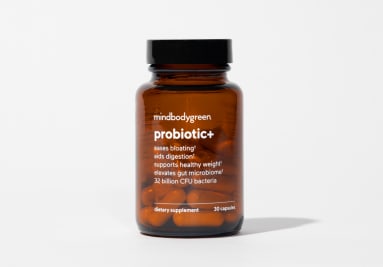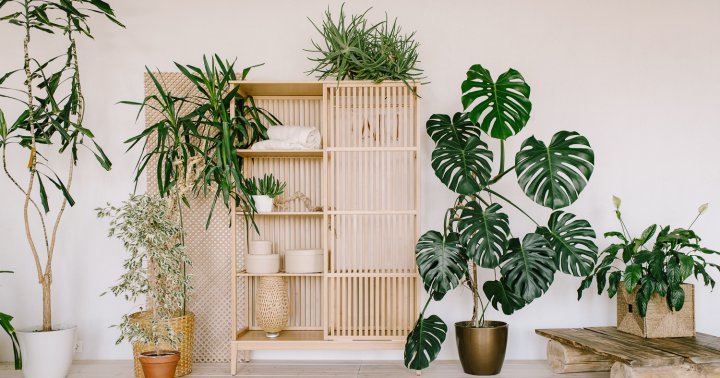How To Prevent Mold In Your Home As A Renter, A Remediation Expert Explains
Plus, questions to ask before signing your next lease.

Image by Aleksandar Novoselski / Stocksy October 24, 2022 Preventing microbial growth is a huge part of maintaining a healthy home—whether you own or rent. Mold might not be the first thing on your mind when you sign a lease agreement, but it's something all renters should consider. One of the benefits of renting is that many home issues are the responsibility of the property manager to resolve. That being said, mold in a rental unit can turn your indoor space into a toxic environment, so here are six steps renters can take to actively keep their home safe.
Advertisement
This ad is displayed using third party content and we do not control its accessibility features.
We can’t exactly put a bubble around our homes, so particles like mold spores and mycotoxins will inevitably blow inside. It’s up to us to actively work to keep particle levels low in our homes. Deep cleaning your space regularly (including appliances) helps remove particles like spores, bacteria, and toxins, improving air quality and decreasing the likelihood of microbial growth. Building the right cleaning product arsenal is a key piece of the puzzle. A HEPA vacuum cleaner, botanical cleaning products, and microfiber towels should be included to ensure particles are actually being eliminated. Make sure to prioritize dusting as well. Microscopic particles settle where dust settles. Dusting can help to reduce the number of particles getting kicked up into the air that proper air filtration must deal with. Make sure to use microfiber cloths during this cleaning process, as they are better at wiping away small particles than regular rags. 2. This step will vary based on the specific apartment complex. Some companies will change the air filters themselves, and others will place the responsibility on the tenant to swap out the filter. For those tasked with changing their filters, opt for the highest-rated MERV filter possible for the specific HVAC system. Contact the apartment management to determine which filter the specific unit can handle. The smaller the particles these filters can eliminate, the better! When dealing with microscopic particles like mold spores and mycotoxins, you want filters with the technology to eliminate them from the air. Otherwise, they’ll just circulate straight back into the home. Make sure to change these on time because dirty air filters will not properly filter out these particles. For those in apartments where staff change out the air filters, ask questions about which filters they use and how often they should be replaced. Work with management to ensure that they’re the best filters for the job and that they’re routinely swapped out on time. This ad is displayed using third party content and we do not control its accessibility features. 3. As noted earlier, it’s impossible to completely prevent particles from entering your home. Cleaning is a great way to remove them, but air purifiers also help to get rid of the rest of these particles. The fewer particles there are, the healthier your indoor environment will be and the less chance of a mold problem developing. Not all air purifiers are built the same, though. You want to go with a unit that removes the maximum number of contaminants possible and does it all of the time, not just some of the time. That way, they don’t recirculate back into the environment and potentially make their way into the bodies of those spending time inside. Air purifiers should at least meet HEPA status, meaning that they remove 99.97% of particles as small as 0.3 microns. If it can remove smaller particles, that’s even better. Some can also work to reduce other contaminants such as formaldehyde, VOCs, bacteria, viruses, and biotoxins. Also, pay attention to the space recommendations on the particular unit to ensure it’s equipped to filter the air for the size of the home. Mold can grow in as little as 24-48 hours. Working to eliminate as much moisture as possible is a key aspect of preventing microbial growth. This ad is displayed using third party content and we do not control its accessibility features. 5. Mold can grow in high humidity. The goal should be to maintain humidity levels of 35 - 50% inside the home. Kitchens and bathrooms are constantly flooded with moisture, pushing them to the top of the list of areas to actively work to reduce humidity. Open a window or door when the room is in use and turn on the exhaust fan. Doing this will help pull that moisture-rich air out of the space and replace it with dry air from the outside. Keep the fan going for at least 30 minutes after using the space for maximum effectiveness, and make sure it’s operating properly by placing a piece of tissue paper against the fan to see if it’s pulling in air. If the humidity level will not decrease, consider investing in a dehumidifier. 6. The sooner you can stop and resolve water damage, the less opportunity there will be for microbial growth. On the other hand, the sooner a mold problem is detected, the faster it can be addressed and the less exposure the renter will face. Hotspot areas to check in a rental unit include: This ad is displayed using third party content and we do not control its accessibility features.Change air filters on time.
Advertisement
Invest in air purification.
Advertisement
Create airflow in the kitchen and bathrooms.
Regularly check for water damage and mold.
Advertisement
Questions to remember for next time.
While it’s important to work to prevent mold at the individual level as a renter, the management team should also be taking steps to keep your home safe. Asking questions before signing a lease can help ensure you're being protected.
A few questions to ask include:
Advertisement
This ad is displayed using third party content and we do not control its accessibility features.
The takeaway.
The more we do to keep our homes in tip-top shape, the more they’ll support our health. Taking these simple steps will help renters breathe easier knowing their living spaces are clean as can be.

 Troov
Troov 


































